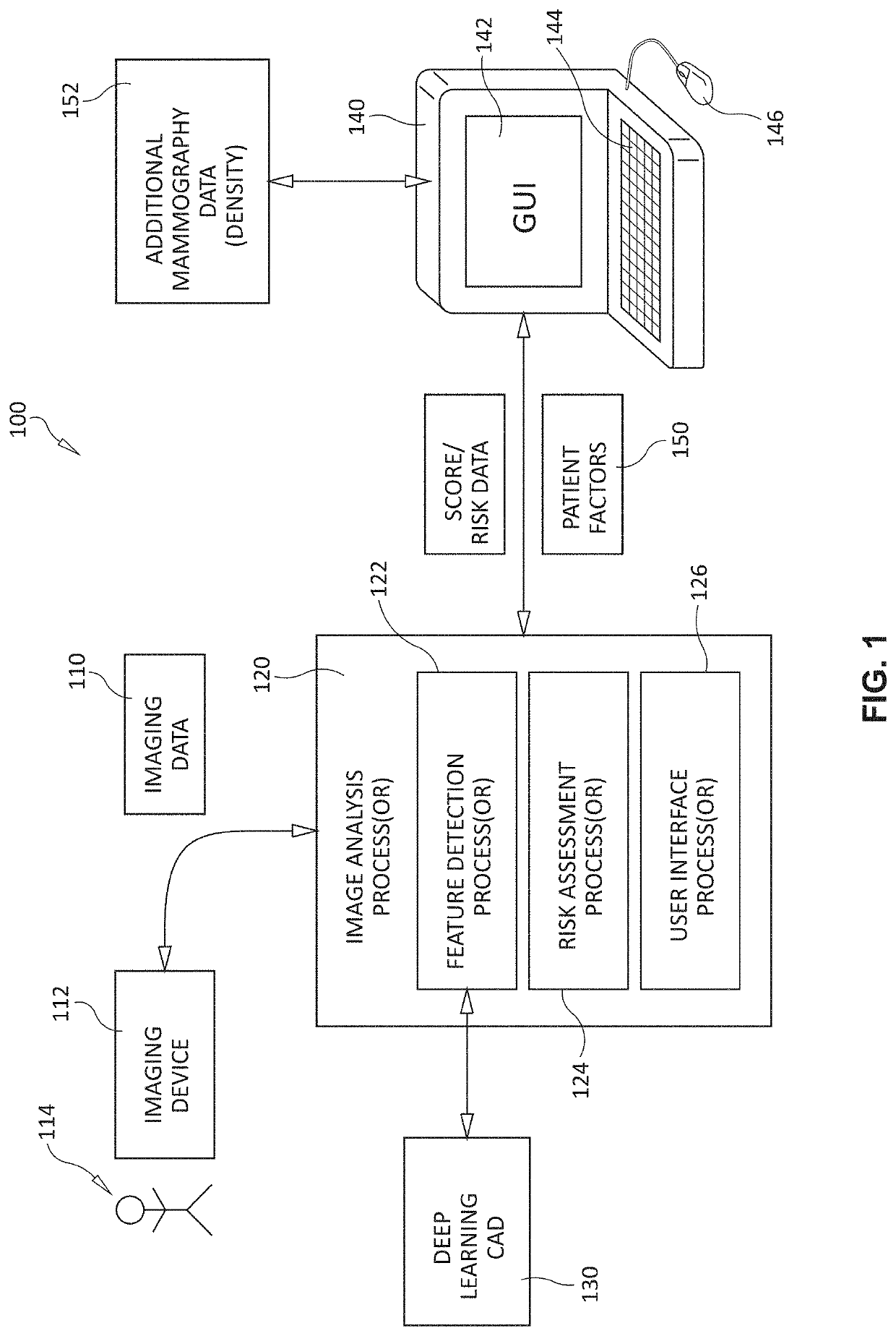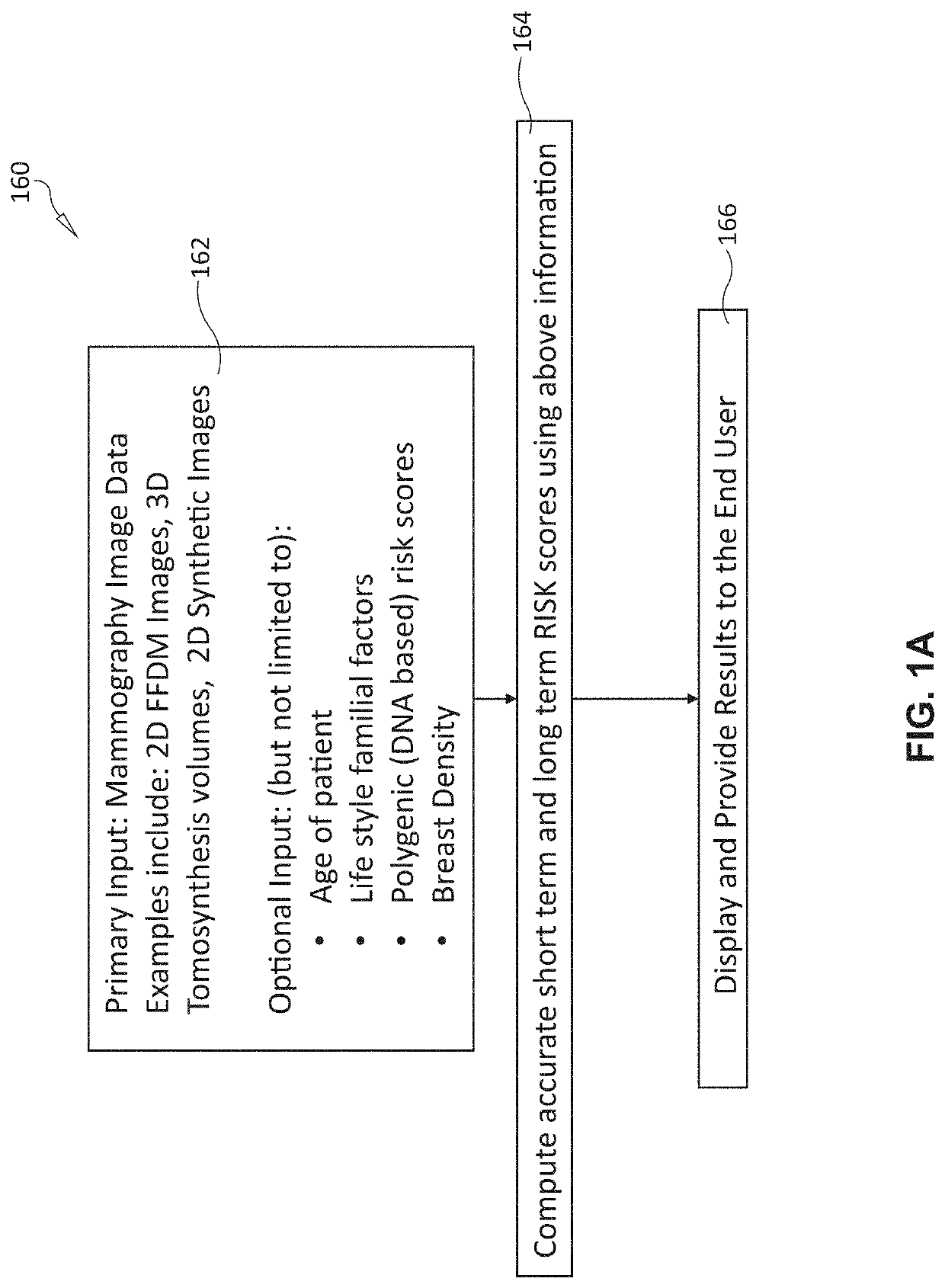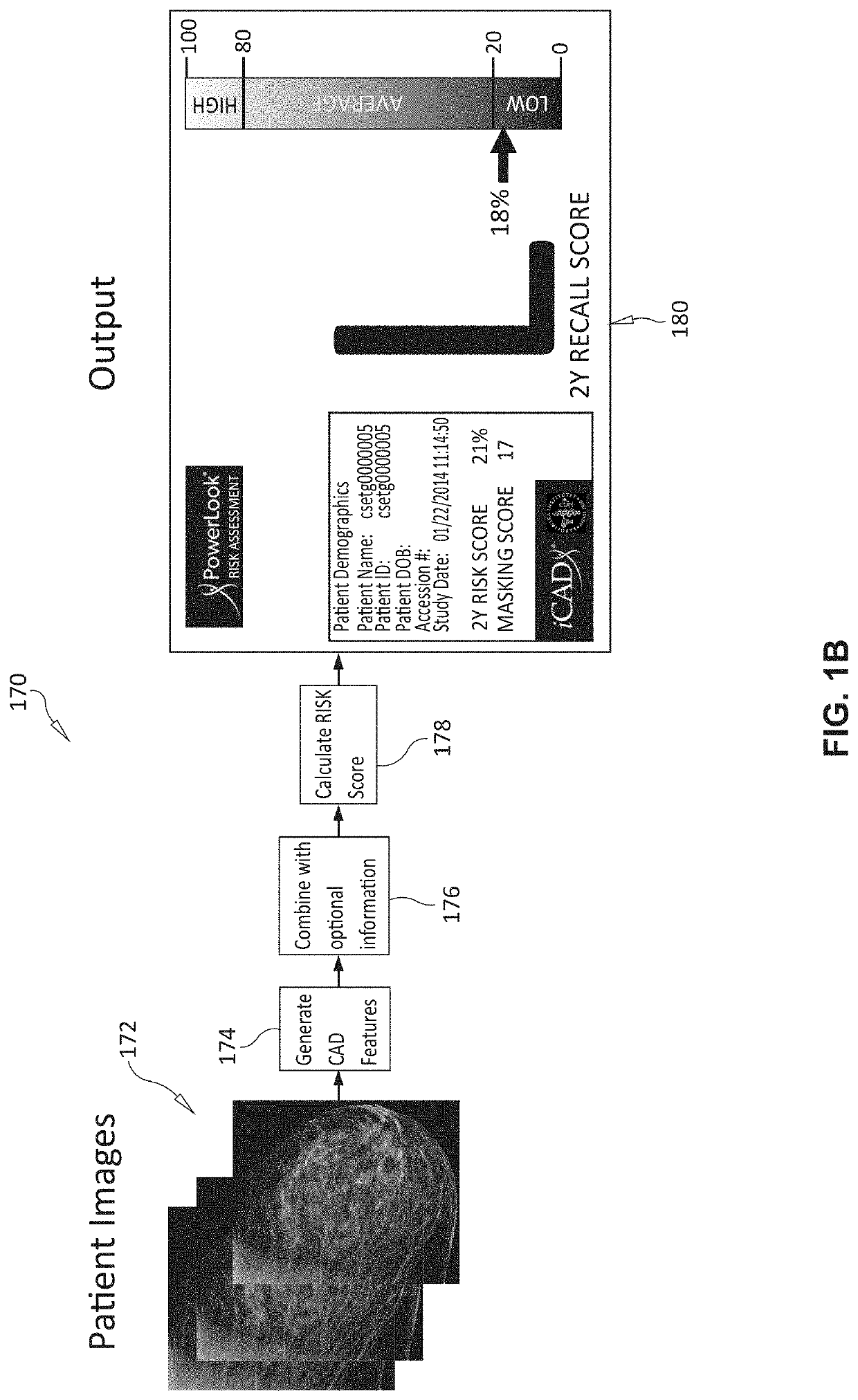System and method for assessing breast cancer risk using imagery
a breast cancer risk and imaging technology, applied in image enhancement, healthcare informatics, instruments, etc., can solve the problems of breast cancer risk increase, breast cancer risk later diagnosis, and increased so as to achieve high accuracy, reduce the risk of breast cancer, and add substantial cost or effort.
- Summary
- Abstract
- Description
- Claims
- Application Information
AI Technical Summary
Benefits of technology
Problems solved by technology
Method used
Image
Examples
Embodiment Construction
I. System Overview
[0021]Reference is made to FIG. 1, which shows a generalized arrangement 100 in which image data 110 is derived from an imaging device 112 or store of acquired imaged—for example those acquired from a scan of a patient 114 based upon (e.g.) mammography. The image data 110 is provided to a processor and associated analysis process 120. The process(or) 120 is part of a deep learning computer-aided detection (CAD) system 130 that builds and / or employs neural networks, or similar learning arrangements / data structures (e.g. AI-based systems) to derive scores for use in evaluating the significance of detected structures within the image and underlying tissue. Note, that as used herein, the term “CAD” can refer to a computing system (hardware, software and / or firmware) that performs computer-aided detection processes, and can also (optionally) perform computer-aided analysis processes in a manner clear to those of skill. In addition, the term “CAD” can be taken to include...
PUM
 Login to View More
Login to View More Abstract
Description
Claims
Application Information
 Login to View More
Login to View More - R&D
- Intellectual Property
- Life Sciences
- Materials
- Tech Scout
- Unparalleled Data Quality
- Higher Quality Content
- 60% Fewer Hallucinations
Browse by: Latest US Patents, China's latest patents, Technical Efficacy Thesaurus, Application Domain, Technology Topic, Popular Technical Reports.
© 2025 PatSnap. All rights reserved.Legal|Privacy policy|Modern Slavery Act Transparency Statement|Sitemap|About US| Contact US: help@patsnap.com



